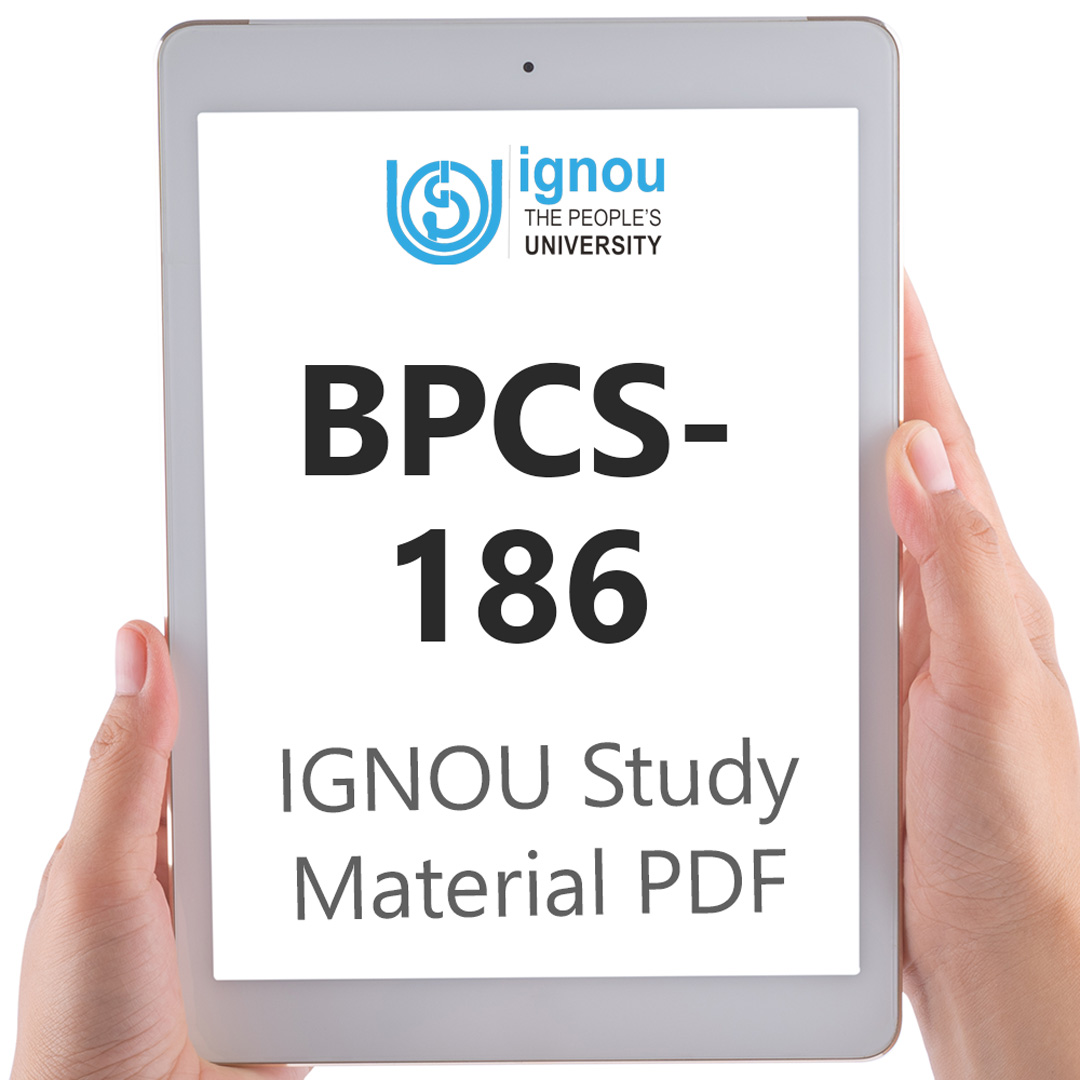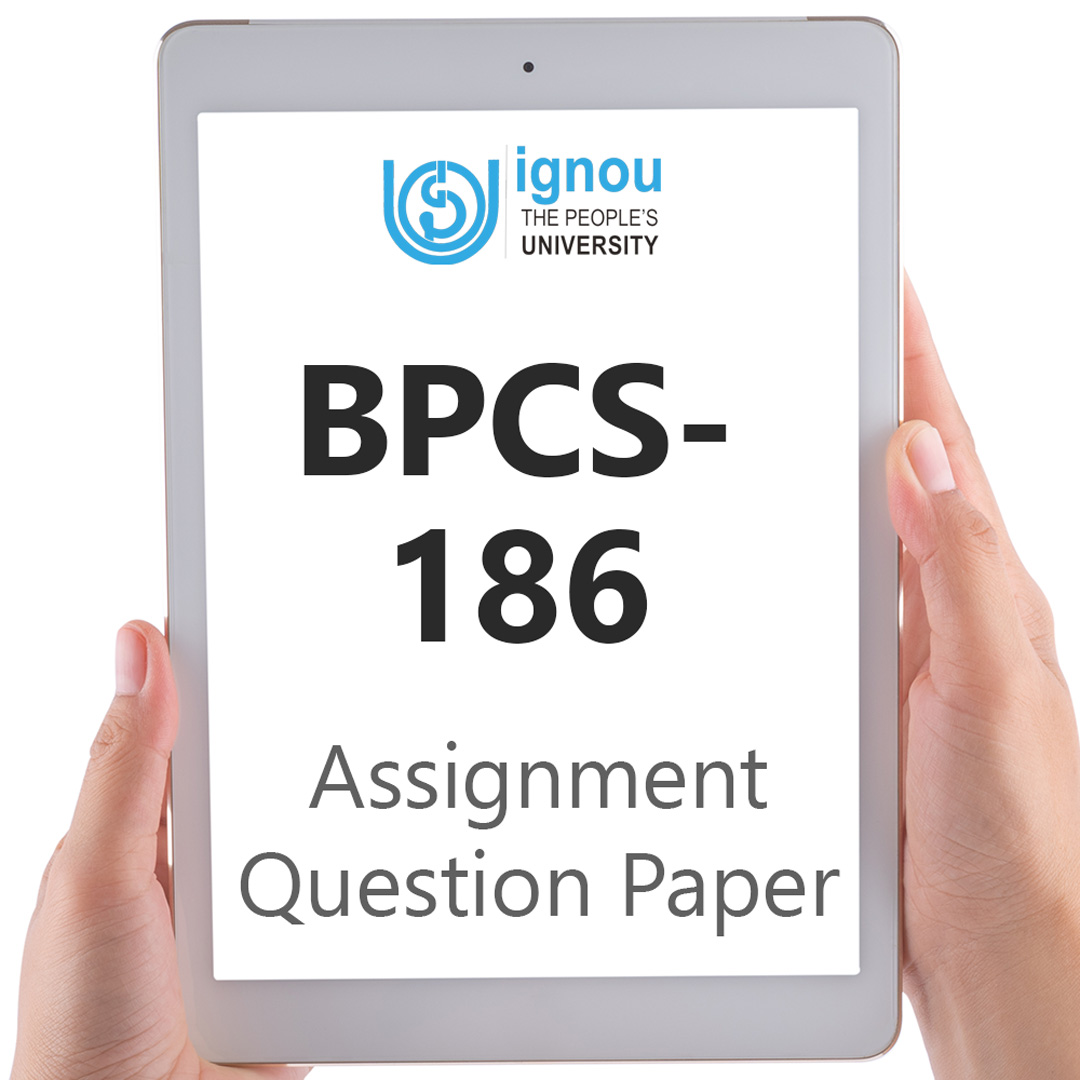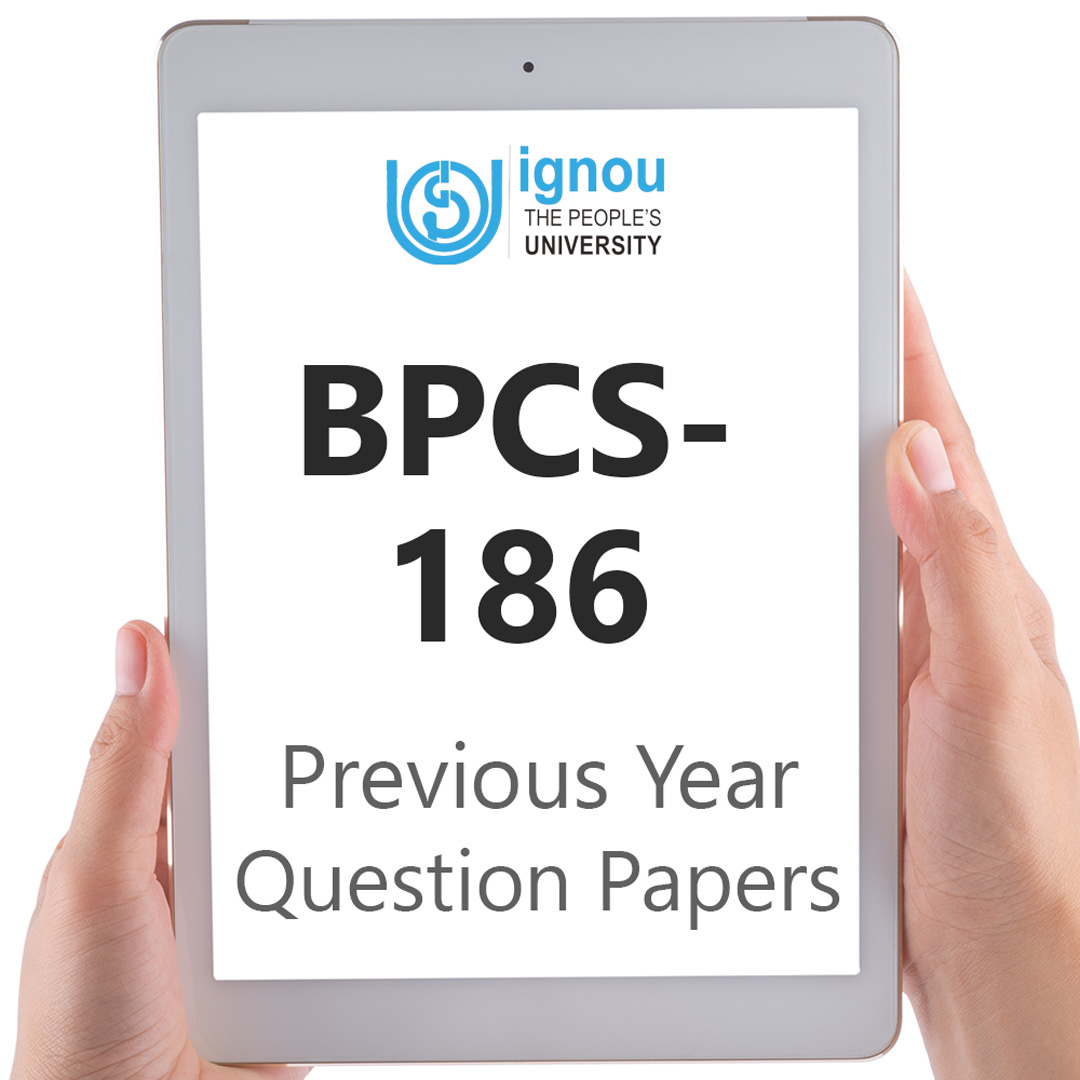If you are looking for BPCS-186 IGNOU Solved Assignment solution for the subject Managing Stress, you have come to the right place. BPCS-186 solution on this page applies to 2022-23 session students studying in BSCG, BAG, BAECH, BAHIH, BAPSH, BAPCH, BAPAH, BASOH, BSCANH, BAEGH, BAPFHMH, BAVMSME, BAGS courses of IGNOU.
BPCS-186 Solved Assignment Solution by Gyaniversity
Assignment Code: BPCS-186/Asst /TMA /July 2022- January 2023
Course Code: BPCS-186
Assignment Name: Managing Stress
Year: 2022-2023
Verification Status: Verified by Professor
Part A
Assignment One
Answer the following questions in about 500 words each. Each question carries 20 marks. 3 x 20 = 60
Q1. Explain the various models of stress with the help of suitable diagrams.
Ans) Fight or Flight Response:
Initially referring to stress as the emergency reaction, Cannon went on to explain that it was caused by the struggle with one's emotions. According to Cannon, the fight-or-flight reaction applies to stress. According to Cannon, stress is a result of an external environmental demand that caused an imbalance in a person's natural steady state. He continued by saying that the body has built-in defence mechanisms that aid in preserving a person's homeostasis, or natural steady state. Cannon was also interested in how a person's sympathetic nervous system responds to stressful situations.
So, when someone encounters a dangerous circumstance, he or she will either prepare to confront the threat or flee or run away from it. The person will go through some physiological changes that prepare him or her for either fighting or fleeing. Sweating, a parched mouth, tight muscles, and other physiological changes are only a few examples. Additionally, the blood pressure and heart rate have increased. Additionally, the pupils may enlarge and the breathing may quicken. In essence, at this time, the body of the person will move energy from body systems that do not need to function in order to respond to the circumstance at hand to those that do. Both the sympathetic nervous system and the endocrine system are stimulated. For instance, if a person unexpectedly comes across a snake, their body will prepare them for this event by triggering either a fight or flight reaction. As a result, there is an unbalance that interferes with the body's homeostasis. The body will return to normal and homeostasis will be restored once the crisis has ended and there are no longer any obstacles or dangers. the physiological modifications brought on by the fight-or-flight reaction.
The flight or fight response helps to deal with the problem quickly, which is good. Such instances of stress might eventually have a detrimental effect on a person's physical and emotional health.
Person- French, Harrison, and Caplan proposed the Environment Fit Model (P-E Fit) in 1982. The fundamental tenet of this paradigm is that people differ in terms of their capacities and desires, and that stress emerges from a mismatch between an individual's exposure to demands and his or her available resources. An individual will perceive this as an opportunity, not a threat, and won't feel too stressed out if they are well-prepared for one of the important presentations in their company. However, if the responsibilities of the job are high and the person feels under pressure to deliver the presentation, this might lead to stress.
Psychodynamic Theory: The psychodynamic hypothesis also explains stress. Traumatic anxiety and signal anxiety were topics covered by Freud. Traumatic anxiety is a type of anxiety that affects a person and is associated with their repressed sexual urges and aggressive inclinations. When a threat that is external and objective and is congruent with the link between stressor and strain is present, signal anxiety is said to exist. After a stressful experience, anxiety can lead to psychopathology. Even while the opposing ideas may ultimately become neutral ones, anxiety may still go through a phase where this energy is turned into symptoms that the person finds physically uncomfortable.
Q2. Describe the effect of stress on performance and productivity.
Ans) When we talk about productivity and performance, we can be referring to both an individual's overall productivity and productivity in the context of the workplace. Before we discuss performance and productivity in the context of the workplace, let's first discuss how stress can impact cognitive functioning, which is crucial for performance and productivity.
Stress can impair a person's capacity for thought or cognitive performance, either temporarily or over a lengthy period of time. In fact, chronic stress has been linked to the development of dementia and may even lead to a decline in cognitive ability. The memory, focus, and attention of a person can be affected by long-term stress. Another trait that may be present in stressed individuals is decision-making that is tied to stress. Stress can also result in forgetfulness, a lack of organisation, shaky judgement, racing thoughts, and pessimism, all of which can have a detrimental impact on a person's general performance and productivity.
Stress has a detrimental effect on a person's executive functioning, which includes tasks like making plans, reasoning, managing one's life, and solving problems. And when resources are diverted from other aspects of the person's life to deal with stress, this can be the result of the overload that stress generates. Because of this, someone who is anxious may not be able to pay attention intently, recall details with clarity, or solve problems well.
While under stress, a person's cognitive performance as well as their capacity for decision-making may be negatively impaired. An individual may block out external cues and make heuristic-based decisions when under stress. Additionally, those who are stressed out may behave rigidly and have limited thought processes. Stressed individuals may also be less able to manage information or analyse complex situations. Stress from everyday life can also make someone feel down, which can make them weary, which can further hamper their ability to pay attention.
The cognitive function of students who are also stressed out may deteriorate, making it challenging for them to pay attention in class and maybe forgetting what they have learned. This must have caught attention in particular because stressed up about exam. The students might be unable to correctly reply to the exam if they are unable to recall the material. In addition to academic stress, such children may also experience stress from other sources, such as pressure from parents, teachers, and significant others, internal pressure to achieve well, stress from competition, fear about the future, etc. By impacting both their health and cognitive function, all of this could have a detrimental impact on their performance and productivity.
Long-term stress on employees can have a number of negative effects, such as affective fatigue, a loss in organisational commitment, and a spike in staff turnover. Stress has been associated with poor performance, job dissatisfaction, and even absenteeism. The majority of the time, stressed-out individuals require more time to complete a task than relaxed individuals. Stressed individuals can exhibit poor time management abilities. This is especially true when a person experiences stress levels that are beyond their capacity, making it challenging for them to cope and impairing their capacity to manage their time.
3. Explain the nature of coping and describe the coping styles.
Ans) Nature of coping and describe the coping styles is discussed below:
Nature of Coping
The goal of coping may be to address the issue that is causing the person any suffering or to manage the unpleasant emotions they are going through. However, coping strategies might be beneficial or harmful. A positive adaptive coping strategy offers long-lasting effects in addition to reducing stress. Maladaptive coping, on the other hand, may temporarily relieve stress, but it may have a harmful effect on the person's physical and mental health. Consuming alcohol or drugs, smoking, engaging in dangerous behaviours, isolating oneself, being excessively critical of oneself, and other such behaviours are examples of maladaptive coping mechanisms. There are distinct variances in how people handle difficult situations. There may be variations depending on a person's personality, amount of stimulation tolerance, psychological toughness, style of attribution, level of learned helplessness, and sense of coherence. Gender may also have a role in differences.
The way a person responds to stress and perceives it depends on both personality and coping mechanisms. People with diverse personalities will exhibit a range of coping mechanisms. People's coping mechanisms will also differ depending on whether they have a high or low desire for stimulation. People with low stimulation needs cannot manage stress as well as those with high stimulation needs.
Coping style
1) Proactive coping and avoidant coping
The person will face the stressful situation or event head-on when practising proactive coping. By gaining a deeper understanding of the circumstance that is causing them stress, someone who uses this style of coping will take immediate action.
Proactive coping can be divided into many stages:
a) Accumulation of resources: In order to be able to deal with the stressful situation, the individual will make attempts to accumulate resources, this could also be in terms of gathering information so as to understand the stressful situation in better manner.
b) Identifying or anticipating the potential stressor: A potential stressor is anticipated or identified by the individual. For instance, if it is expected that one’s superior may ask for a certain report, the employee will anticipate the stressor and start working on the report beforehand.
c) Initial appraisal: Initial appraisal of the stress creating situation is carried out.
d) Preliminary efforts to cope with the stressful situation: Based on the initial appraisal, preliminary efforts to cope with the stressful situation are carried out. In case these efforts do not show any positive results then, some other action is taken in order to deal with the situation.
e) Seeking feedback and using the same: Based on the stages three and four, feedback is sought and used so that modifications and changes can be carried out.
2) Emotion focused coping and Problem focused coping
Emotion focused coping involves management of the emotional reactions towards the events causing stress. “Emotion-focused coping strategies aim to reduce and manage the intensity of the negative and distressing emotions that a stressful situation has caused rather than solving the problematic situation itself”. Thus, this coping is directed towards decreasing any unpleasantness that the person experiences as a result of facing the stressful situation. The avoidant coping style that we discussed earlier could be related with this coping style as it involves avoidance of a situation.
Though, this coping style also involves positive reappraisal, where positive aspects of the situation are focused on keeping in mind one’s own benefits and growth. Emotion focused coping are often used when change in the stressful situation is not possible and it is also more likely to be used by women than men.
Assignment Two
Answer the following questions in about 100 words each. Each question carries 5 marks. 8 x 5= 40
Q4. Explain the various sources of stress with the help of suitable examples.
Ans) Frustration: It can be defined as what happens when a person's goal-oriented behaviour gets obstructed. Ravi, for instance, was disappointed when he did not obtain the promotion he had expected.
Pressure: Another kind of stress that can come from both internal and external sources is pressure. Environmental demands, obligations, and responsibilities lead to external pressures. “ We put ourselves under strain to maintain the image we have of ourselves. Parents pressuring a child to perform well on an exam is an example of external pressure, whereas a child feeling the need to study and perform well on an exam is an example of internal pressure.
Q5. Describe perfectionism as a factor contributing to stress proneness.
Ans) A person who is perfectionist can be defined as having high standards for both them and others, or for both, and these standards are so demanding that there is little room for compromise. Internal perfectionism (expectations from oneself) and external perfectionism are two categories for perfectionism (expectations from others). Internal perfectionists will hold themselves to a high standard, which can have an impact on both their health and productivity. Additionally, it may harm their relationship and self-esteem. People with external perfectionism frequently criticise others and are never content with how others perform; as a result, they may become irritated and hostile.
Q6. Explain the Jacobson’s Progressive Muscle Relaxation.
Ans) In Jacobson’s progressive muscle relaxation method, the muscles are deeply relaxed. This technique's basic premise is that tension and relaxation cannot coexist because they are caused by two different autonomic nervous systems, namely the sympathetic and parasympathetic nervous systems. Furthermore, because they inhibit one another reciprocally, these systems cannot be engaged at the same moment. The technique essentially entails contracting and then relaxing certain body muscles. The workout can be done twice day and takes between 15 and 20 minutes to complete. The approach primarily begins with inhaling, holding, and exhaling. It's crucial to maintain calm and comfort while using this Technique.
Q7. Describe Yoga as a technique of stress management.
Ans) Yoga as a practise first appeared in India, and the word yoga, which means "to connect" in Sanskrit, refers to the union of the individual's body and consciousness in order to improve their health and wellbeing. Self-realization is yoga's primary objective. Numerous advantages of yoga include stress reduction, increased productivity, mindfulness, and general improvement in physical and mental health. But that one is crucial. Yoga primarily entails specialised breathing techniques, physical postures (Asanas), and meditation techniques. yoga decreases levels of salivary cortisol, blood glucose, as well as plasma renin levels, and 24-hour urine norepinephrine and epinephrine levels. Yoga significantly decreases heart rate and systolic and diastolic blood pressure.
Q8. Discuss ABCDE model with the help of suitable example.
Ans) The perception of an activating event (A), which can be rational or irrational, depends on one's belief (B). Consequences (C), both emotional and behavioural, will follow from this. If a belief is illogical, it can be disputed (D), which entails identifying the irrationality of the belief, separating it from rational beliefs, and then engaging in discussion to form rational beliefs. The last point is effect (E), which is nothing more than the result of challenging the erroneous notion.
Example: The "error made by an individual during his/her presentation at work" is the activating event. He or she may hold an illogical or sensible belief regarding this. It happens occasionally, and making a mistake is not the end of the world, could be sensible beliefs in response to this activating experience. The result of a sensible belief would be that the person would experience brief sadness but work harder the following time to avoid making the same mistakes. However, the person may have illogical ideas about the activation event, such as "I am insufficient" or "I am not good enough," which would have the emotional effect of having the person give up and avoid giving presentations in the future.
Q9. Describe various techniques of time management.
Ans) Techniques of time management as follows:
Planner System: One can use this approach to maximise their time. This planning tool can take the form of a diary, a notebook, or any other format that one deems practical.
Blocking Time Wasters: Emails and letters that waste time may exist. Avoid letting mound of paperwork become too large.
Delegation: To efficiently manage time, delegation can also be used whenever possible. Giving a task to someone else is the act of delegation.
Dealing with Procrastination: Procrastination is a problem that must be resolved if one is to effectively manage their time. The deliberate postponement or delay of tasks or activities is known as procrastination.
Q10. Explain effective communication as an interpersonal skill.
Ans) Developing excellent communication is one of the most crucial aspects of interpersonal skills. The Latin word "communis," which means "common/sharing," is the source of the English word "communication." It is possible to think of communication as a continuous process that involves sharing and receiving information. In order for communication to take place, there must be two people present who can both listen and communicate. Effective communication requires feedback, and the message that is sent can be vocal, for instance, written or spoken, or it can be nonverbal, for instance, via symbols, signs, or gestures. An essential component of effective communication, because effective communication requires being receptive to feedback.
Q11. Explain JOHARI window.
Ans) The window can be used to observe how a person expresses their thoughts, feelings, attitudes, and so forth in regard to other people. The first window, "Arena," shows knowledge, opinions, attitudes, and emotions that are both known to oneself and known to others. The second pane is labelled "Closed," which stands for knowledge, opinions, attitudes, and sentiments that one is aware of but which one keeps to oneself. The third window, labelled "Blind," stands for knowledge, opinions, attitudes, and sentiments that the individual is unaware of but that are known to others. The fourth window, which is "Dark," stands for knowledge, opinions, attitudes, and sentiments that are both personal and private to the individual.






